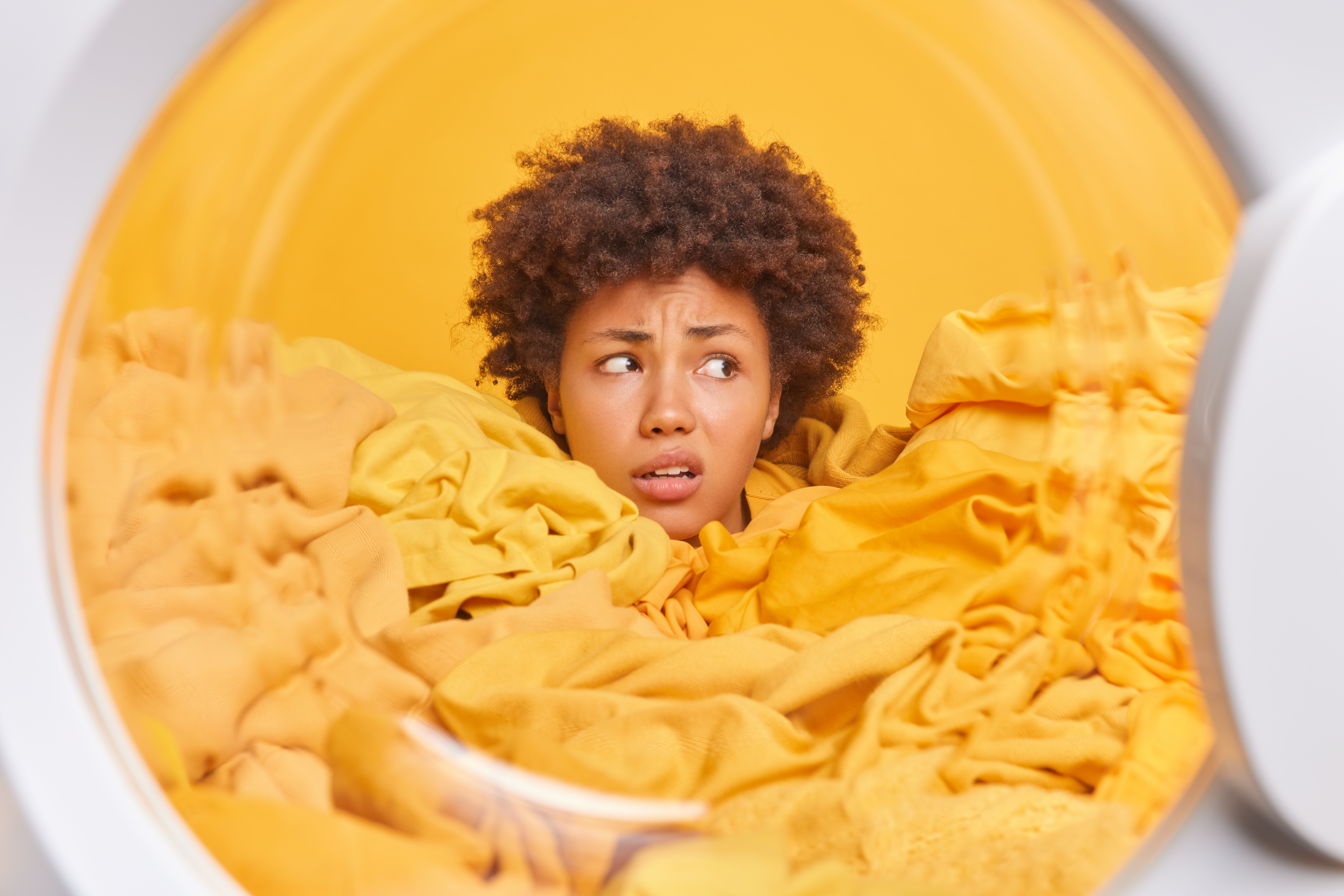A washing machine that won’t spin is not only inconvenient but also a source of concern. It can leave your clothes soaking wet and your laundry routine in disarray.
To help you get to the root of the problem, we’ve prepared an in-depth troubleshooting guide.
In this comprehensive article, we’ll explore in detail the most common reasons behind a non-spinning washing machine and provide step-by-step solutions to get your appliance back in optimal working condition.
Ready? Let’s Go!
Washing Machine Won’t Spin
Washing machine not spinning is commonly caused by unbalanced workload, part malfunction, lid or door switches preventing washing machine for spinning.
Now we have answered the main question, let’s dive into troubleshooting/
1. Unbalanced Load:
An unbalanced load is a common issue that can prevent your washing machine from spinning. Here’s a more detailed approach to tackling this problem:
a. Open the washing machine and inspect the load. Unevenly distributed clothes, especially heavy items like towels, can cause an imbalance.
b. Gently redistribute the load so that it’s evenly spread within the drum.
c. If the issue was caused by an unbalanced load, start a new cycle and closely observe to ensure the machine spins properly.
Connect with an Appliance Repair Technician
Click here to use the chatbox to speak with one of our friendly technicians
No in-home service calls. No appointments.
2. Lid or Door Switch:
Modern washing machines feature safety mechanisms such as lid or door switches to prevent accidents and ensure proper operation. If this switch is at fault, it can lead to a no-spin situation:
a. Confirm that the washing machine’s lid or door is securely closed.
b. Carefully examine the lid or door switch for visible damage, wear, or loose connections.
c. If you identify problems with the switch, it’s essential to replace it with a new one. Consult a qualified technician for this task.
Related Articles
- Washing Machine Components: Explained
- Washing Machine Control Board 101: For Beginners
- Washing Machine Motor 101: Beginners Guide
3. Drive Belt:
The drive belt plays a crucial role in connecting the motor to the drum, allowing the machine to spin. Here’s a detailed procedure for inspecting and potentially replacing the drive belt:
a. Unplug the washing machine and access the rear or bottom of the appliance, where the drive belt is located.
b. Conduct a thorough examination of the drive belt for any signs of wear, fraying, or visible damage.
c. If you detect any problems with the drive belt, it’s advisable to call in a professional to replace it. They’ll have the expertise to do this accurately.
Connect with an Appliance Repair Technician
Click here to use the chatbox to speak with one of our friendly technicians
No in-home service calls. No appointments.
4. Motor and Motor Control Board:
A malfunctioning motor or motor control board can cause spinning issues in your washing machine. Here’s a more in-depth look at addressing these components:
a. Unplug the washing machine and gain access to the motor.
b. Carefully inspect the motor for loose or disconnected wires, which can result in issues.
c. Test the motor using a multimeter to ensure its operating correctly. A technician may be needed for this step.
d. If the motor is functioning as expected, consider examining the motor control board or consult a technician for a comprehensive diagnosis and repair.
5. Clutch and Transmission:
The clutch and transmission are integral to the spinning process in your washing machine. Detailed inspection and potential repairs are crucial:
a. Access the clutch and transmission components, often located underneath the washing machine.
b. Scrutinize these components for visible signs of wear, damage, or loose parts.
c. Should you identify issues with the clutch or transmission, it’s highly recommended to seek professional assistance for thorough repairs.
6. Door Lock Mechanism:
Many modern washing machines feature a door lock mechanism that must engage correctly for the machine to spin. If the lock is malfunctioning, it can disrupt the spinning process:
a. Inspect the door lock mechanism meticulously for any visible damage or wear.
b. Ensure that the lock engages securely when the door is closed. It should audibly click into place.
c. If the door lock is found to be defective, consider replacing it to facilitate proper machine operation.
Connect with an Appliance Repair Technician
Click here to use the chatbox to speak with one of our friendly technicians
No in-home service calls. No appointments.
Final Thoughts
Unbalanced workload, part malfunction, lid or door switches preventing washing machine from spinning are all common causes of washing machine not spinning.
By following the detailed troubleshooting steps, you can often identify and resolve the issue on your own.
However, if you’re uncertain about any of the steps or if the problem persists after attempting these solutions, it’s highly recommended to contact a professional appliance repair technician.
Routine maintenance and proper care can also play a significant role in preventing such issues, ensuring that your washing machine operates efficiently for many years to come.
Connect with an Appliance Repair Technician
Click here to use the chatbox to speak with one of our friendly technicians
No in-home service calls. No appointments.
Related Articles
- Washing Machine Components: Explained
- Washing Machine Control Board 101: For Beginners
- Washing Machine Motor 101: Beginners Guide
References
- Image by wayhomestudio on Freepik

